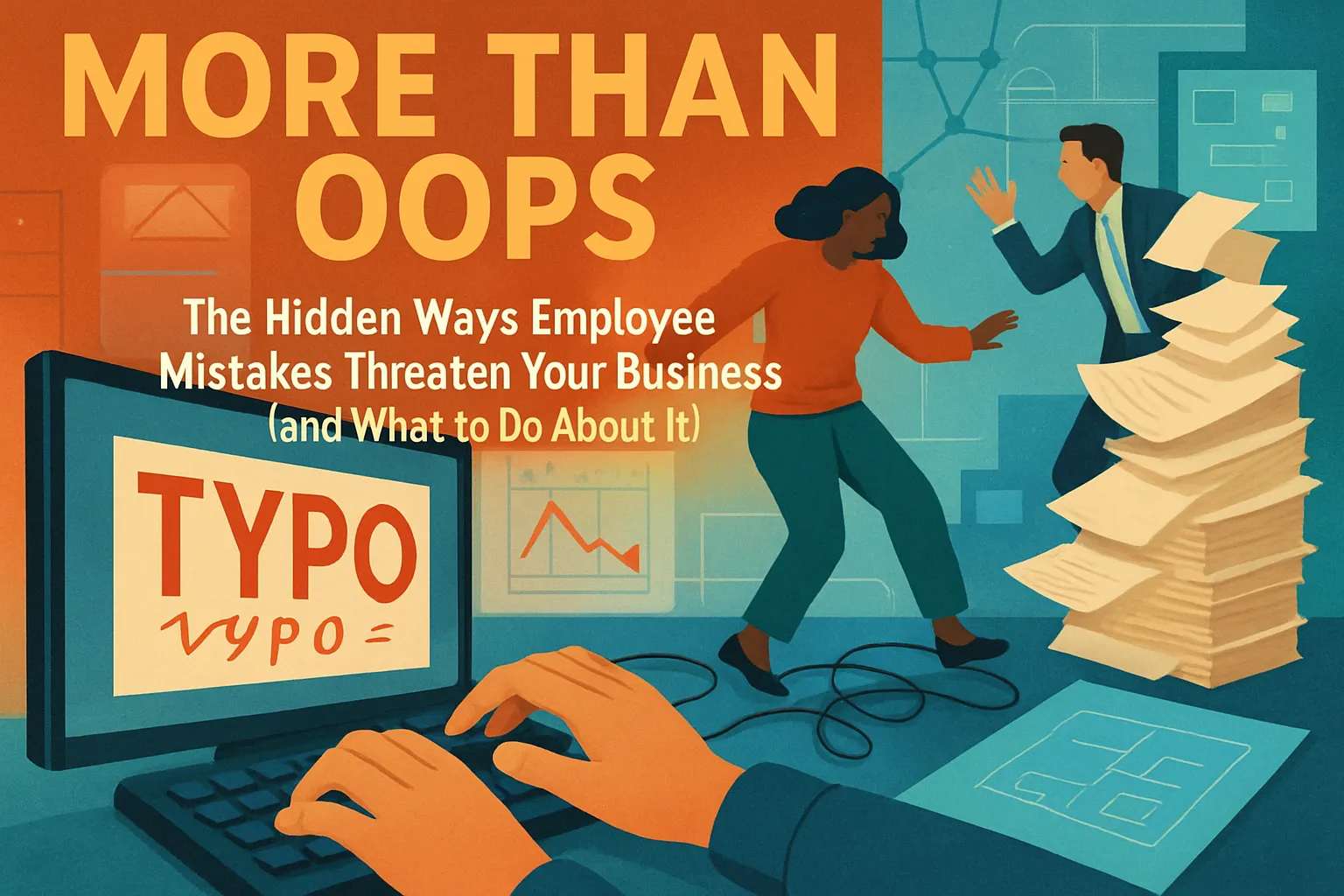Let’s be honest – nobody grew up dreaming of sitting in a virtual security training session. But here we are, learning how not to click that too-good-to-be-true link while wearing pajama bottoms (admit it, we’ve all done it). In 2019, I personally led a security seminar where someone tried logging in as “admin123” in front of everyone—cue nervous laughter. Fast forward to today and that ‘admin123’ approach is a recipe for disaster. With cyber threats multiplying and remote work sticking around, remote cybersecurity training has moved from a quirky option to the main event. But is it effective, and more importantly, can it keep us a step ahead of hackers with unlimited coffee supplies? Grab your best lounge pants – we’re diving in.
Not Your Old-School Training: The Digital Shift in Security Awareness
Rewind to 2015. Security awareness training often meant gathering in the breakroom, grabbing a donut, and sitting through a PowerPoint marathon. The highlight? Maybe a free pen or a stress ball. But let’s be honest—most people tuned out before the first slide was over. Fast forward to today, and the landscape looks completely different. Virtual security training is now as routine as coffee on a Zoom call, and the results are speaking for themselves.
From Boring Lectures to Interactive Cybersecurity Awareness Training
Traditional security awareness training had a one-size-fits-all approach. Everyone sat through the same lecture, regardless of their role or experience. The problem? It didn’t stick. In fact, even though 90% of companies have some form of security awareness training, a staggering 70% of employees still behave insecurely. Clearly, something had to change.
Today’s cybersecurity awareness training is a whole new ballgame. Instead of static slides and monotone lectures, employees now engage with interactive, personalized modules. These programs adapt to the learner—whether they’re a tech newbie or a seasoned pro. As Lisa Toth, Security Training Specialist, puts it:
"The most effective training adapts to the learner, not the other way around."
This shift in security awareness training delivery methods means employees get relevant, hands-on experience. For example, someone in finance might practice spotting phishing invoices, while a marketing team member learns to recognize suspicious social media links. The result? Training that actually resonates—and sticks.
Real-World Lessons: When Training Hits Home
Let’s face it, nothing drives a lesson home like personal experience. A friend of mine learned about phishing the hard way—right after losing access to their favorite streaming service. Ouch. That “teachable moment” came too late, but it’s exactly the kind of scenario modern online security training aims to prevent. By simulating real threats and providing instant feedback, these programs help employees recognize and react to cyber risks before it’s too late.
Short, Frequent, and Effective: The New Rhythm of Cybersecurity Training
Remember those once-a-year training sessions? The ones where everyone nodded off after lunch? Research shows that cybersecurity training frequency matters—a lot. Short, ongoing sessions (think quarterly or monthly) are far more effective than long annual marathons. Employees retain more, stay alert, and actually change their behavior.
- Regular, bite-sized training keeps security top-of-mind.
- Personalized content addresses real risks employees face daily.
- Interactive modules boost engagement and retention.
It’s not just theory, either. Studies show that online security training effectiveness is tangible: companies report up to a 70% reduction in security-related risks and a 30% drop in phishing link clicks after switching to digital, ongoing programs. That’s a massive improvement over the old “set it and forget it” approach.
Cybersecurity Training Effectiveness: Why Online Works
So, what makes cybersecurity training effectiveness soar in the digital era? It’s all about flexibility and relevance. Employees can complete modules at their own pace, revisit tricky topics, and even test themselves with real-world scenarios. Plus, online platforms track progress and highlight areas where more support is needed.
Here’s a quick look at how cybersecurity awareness training has evolved:
| Old-School Training | Modern Online Training |
|---|---|
| Annual, in-person lectures | Quarterly/monthly, online modules |
| Generic content | Personalized, role-based scenarios |
| Passive learning | Interactive, hands-on practice |
| Low engagement | High engagement and retention |
The digital shift in security awareness training delivery methods isn’t just a trend—it’s a revolution. By making training more accessible, relevant, and engaging, organizations are finally seeing the behavior change they’ve been hoping for. And with cyber threats evolving every day, that’s a shift everyone can get behind.
Phishing, Passwords, and Pajamas: The Unique Challenge of Remote Work
Remote work has changed the way people think about cybersecurity. While working from home offers flexibility and comfort—yes, even in pajamas—it also opens the door to a new breed of cyber gremlins. Weak passwords, risky home Wi-Fi networks, and the ever-present temptation to click without thinking are just a few of the unique challenges facing today’s remote workforce. As organizations embrace remote and hybrid models, the importance of remote security training has never been clearer.
New Risks in a Familiar Setting
At the office, security teams control the environment. At home, it’s a different story. Employees might be working at the kitchen table, with kids, pets, and distractions all around. The biggest threats in remote work aren’t always sophisticated hackers—they’re simple mistakes:
- Password reuse: Using the same password for work and personal accounts is still alarmingly common.
- Phishing: Remote workers are more likely to fall for phishing emails, especially when multitasking.
- Insecure endpoints: Personal devices and home routers often lack the robust protections of office equipment.
As Jamie Chen, CISO, puts it:
'You can teach someone how to spot a fake email, but teaching them not to use ‘password123’ at home is the real trick.'
Remote Cybersecurity Training: Adapting to the Home Office
The effectiveness of cybersecurity training depends on how well it adapts to these new realities. Traditional, one-size-fits-all training just doesn’t cut it anymore. Instead, organizations are turning to remote cybersecurity training that’s personalized, interactive, and—thanks to AI—smarter than ever.
- Role-specific scenarios: AI-driven platforms now simulate phishing attacks and security risks tailored to each employee’s job role. For example, a finance manager might see fake invoice scams, while a marketer faces social media phishing attempts.
- Real-world simulations: Training programs can mimic the distractions of home life. Imagine a security quiz where the correct answer is literally, “Don’t trust your dog with your laptop.” It’s funny, but it drives home the point: security is everyone’s responsibility, even in pajamas.
- Continuous learning: Ongoing, bite-sized training keeps security top of mind. Instead of an annual lecture, employees get regular reminders and practice spotting threats in real time.
Remote Work Security Best Practices: The New Normal
Remote work security best practices are shaping a new generation of training content and policies. Here’s what’s trending:
- Stronger authentication: More companies are requiring biometric logins and multi-factor authentication (MFA) for remote access. According to recent data, biometric and MFA solutions are now standard in many remote security protocols.
- Password management: Employees are encouraged to use password managers and unique, complex passwords for every account. Training now includes practical tips and hands-on demos for managing passwords securely at home.
- Device and network hygiene: Remote security training covers basics like updating software, securing home Wi-Fi, and locking screens—even if you’re just stepping away to make coffee.
Cybersecurity Training Challenges: Keeping It Relevant
One of the biggest cybersecurity training challenges is keeping content relevant and engaging. Remote workers face different risks than office-based staff, so training must reflect that. AI-enhanced platforms help by tracking user behavior and adapting training modules to address real-world threats as they emerge.
It’s not just about knowledge—it’s about building habits. When remote employees practice identifying phishing emails, managing passwords, and securing devices in realistic scenarios, they’re more likely to make smart choices when it counts.
Confidence in the Cloud: The Future of Remote Security Training
Despite the challenges, the outlook is bright. A recent survey found that 90% of cybersecurity professionals are confident they can protect sensitive data in remote and hybrid environments—but only if training evolves to meet these new risks. The rise of remote cybersecurity training is leading the way, combining technology, psychology, and a dash of humor to keep teams alert, informed, and secure—no matter where they work.
Reimagining Cybersecurity Careers: Training for Tomorrow’s Tech Workforce
The cybersecurity world is changing at a pace that’s hard to keep up with, and the demand for skilled professionals is skyrocketing. According to recent projections, the cybersecurity workforce is expected to grow by 33% between 2023 and 2033. That’s not just a statistic—it’s a wake-up call for anyone thinking about the future of work and technology. The question is, how do we prepare enough people, fast enough, to fill these roles and defend our digital world? The answer is clear: remote cybersecurity training and virtual security training programs are leading the way.
In the past, cybersecurity training meant sitting in a classroom, maybe even traveling to a big city for a week-long bootcamp. But as threats have evolved, so have the ways we learn to fight them. Today, cybersecurity workforce development for 2025 and beyond is all about flexibility, scalability, and accessibility. Remote cybersecurity training isn’t just a convenience—it’s a necessity for a global, distributed workforce. As Carla Nguyen, Workforce Development Lead, puts it:
‘Your next cybersecurity superstar could be in another country—or just down the street. Remote training unlocks potential everywhere.’
This shift isn’t just about geography. It’s about speed. With cyber threats evolving daily, organizations can’t afford to wait months to onboard new talent or upskill existing staff. Virtual security training programs and online cybersecurity training platforms are narrowing the skills gap faster than a firewall update. A friend’s company, for example, once had little understanding of cyber risks. Now, thanks to a virtual bootcamp, they can onboard employees from anywhere in the world. No jet lag, just JavaScript—and a team that’s ready to tackle the latest threats.
The numbers tell the story. The global online cybersecurity training market was valued at $1.4 billion in 2024 and is projected to reach $3.61 billion by 2033. This explosive growth reflects a simple truth: organizations everywhere need more people with the right skills, and they need them now. Remote cybersecurity training and cybersecurity awareness training programs are central to this workforce development, especially as more companies embrace remote and hybrid work models.
What’s more, virtual cybersecurity training programs and certifications are making it easier than ever for people to enter the field or advance their careers. These programs are flexible and affordable, breaking down traditional barriers to entry. Whether you’re a recent graduate, a career changer, or an IT pro looking to specialize, there’s a virtual path for you. Certifications earned online are recognized by employers worldwide, helping candidates prove their skills and land jobs—no matter where they live.
Imagine the wild card scenario: It’s 2028, and a job ad asks, “Can you protect us from quantum phishing attacks?” The threats of tomorrow are unknown today, but the training we invest in now will shape the heroes who defend us in the future. That’s why cybersecurity training programs are constantly evolving, adding new modules on emerging threats, compliance, and technologies. This agility is only possible in a virtual environment, where updates can be rolled out instantly and learners can access the latest content from anywhere.
Diversity is another key advantage of remote cybersecurity training. By removing geographic and financial barriers, virtual programs open doors for candidates from all backgrounds. This not only helps fill the talent gap but also brings fresh perspectives to the field—something that’s essential for outsmarting cybercriminals.
In the end, cybersecurity workforce development for 2025 and beyond depends on our ability to train, certify, and empower people at scale. Remote cybersecurity training and virtual security training programs are not just trends—they’re the foundation of a safer digital future. As the market grows and the threats multiply, the need for flexible, accessible, and up-to-date cybersecurity training programs will only become more urgent. The next generation of cybersecurity professionals is being trained right now, in living rooms, coffee shops, and co-working spaces around the world. And that’s exactly where tomorrow’s tech workforce needs to be.
TL;DR: Remote cybersecurity training is the new normal for a reason: it’s flexible, adaptive, and proven to cut cyber risks in our work-from-anywhere world.



